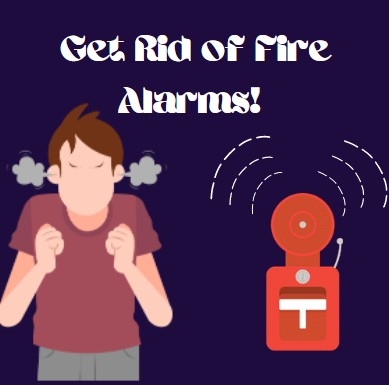Let my children learn: how to save a broken school system
The American education system is broken and failing students. Unfortunately, a strong, specific course of action based on facts and that is not afraid to face painful truths is oftentimes missing. Here are a few, key proposals that should seriously be considered for course correction.
We are not underfunded but need better funding management
Real per pupil educational expenditures across the US have increased by 24% from 2002 to 2019 and nearly tripled from 1970 to 2010. And what have people gotten in return? Nearly identical test scores in reading, science, and math that students got with a third of the spending. New York in particular spent a mind-boggling $29,840 per pupil in 2019, nearly a 70% increase from 2002. Yet as Reason Magazine editor-in-chief Nick Gillespie put it, “New York’s public schools are still as terrible as the Mets, the Jets, and the Giants.” Only 32% of New York students are up to grade level in 8th grade reading and math and the number is even worse in California at 30%.
The situation in Baltimore a few years ago was even more appalling: “In 2016, in 13 of Baltimore’s 39 high schools, not a single student scored proficient on the state’s mathematics exam. In six other high schools, only 1 percent tested proficient in math. In raw numbers, 3,804 Baltimore students took the state’s math test, and 14 tested proficient. Citywide, only 15 percent of Baltimore students passed the state’s English test… Of the nation’s 100 largest school systems, Baltimore schools rank third in spending per pupil.”
Everything from streaming to coffee to microwaves are getting cheaper in real terms and are better quality yet education is getting pricier but not better. Parents and students must demand more transparency in school, a reduction of administrative costs, and more of a say on how exactly funds are managed through votes and other democratic means. Saying that schools are underfunded is clearly a myth and the conversation needs to be steered towards better management of funds, which is more conducive to actual improvement in the education system.
We need universal school choice
This proposal is at the heart of the educational reform movement. For the millions of students who do not have access to quality public education in their area, especially those who are low income and/or minority students, school choice is their golden ticket to a better future and the best opportunity available to close the racial gap in educational achievement.
The most common form of this is charter schools and when adjusted for comparability, they significantly outperform public schools on average. In “Charter Schools and Their Enemies”, economist Thomas Sowell compared socioeconomically and racially comparable charter school and public school classes in NYC where students shared the same building for one or more grade levels. This is primarily composed of lower income Hispanic and black kids, where charter schools are usually located at. His discovery was startling: charter school students were more proficient than the public school students by over 120% in ELA (66% vs. 30%) and 190% in math (73% vs. 25%). This was headlined by success stories like the fittingly named Success Academy and Uncommon Schools networks.
A large reason for why this occurs is because charters have to make a case for students to stay since students can easily leave if they wish. This forces charters to adapt and produce a more appealing product for parents and teachers to lure new students, a pressure public schools shield themselves from. In spite of this, charters are in massive demand and often use lotteries to select their students. To make this accessible to all, we need universal school voucher programs or education savings accounts so education tax dollars follow the students rather than the other way around.
This data is crucial and should be constantly celebrated by the media and intelligentsia as a beacon of a brighter future for education yet many people are unaware of this and sometimes even encouraged to be hostile towards charter schools, primarily by the special interests that are affected by the existence of charter schools (primarily teachers’ unions and progressives) that siphon students away from failing public schools to a better future. But what people should remember is that the primary goal above maintaining a monopoly of government-run education or protecting the wallets of teachers and unions is to give children the best education possible, whether that be in charter schools, private schools, or public schools.
On this particular front, CUSD failed as they rejected the creation of a charter school back in 2012. According to the Claremont Courier, the school was targeted for “severely socio-economically disadvantaged kids, such as those living in mobile homes and residential hotels like the American Inn, located along Foothill Boulevard.” Instead of giving this school a chance to prove itself (knowing that it cannot force students to attend unlike public schools), the CUSD board struck it down with petty reasoning like doubts over implementation of minimum days and a lack of clarity over the budget, extracurricular programs, and the schedule. If there’s anyone to make that judgment, it should be the parents who are offered a potential lifeline for their children and not wealthy, elected officials who don’t have to worry about money to give their kids a quality education.
Interdistrict transfers are crucial for this reason as well. To their credit, CUSD has taken large measures to make this possible, allowing for students from Pomona, Upland, etc. to attend CUSD schools for a better education. Unfortunately, these kinds of transfers are limited, being often difficult at best and impossible at worst due to the district’s prioritization of maintaining funding rather than ensuring that students have the best educational future. This needs to change and the process needs to be simplified and universally accessible so socioeconomic status does not trap students into failing schools that are likely not underfunded in any way.
We need to end public school teacher tenure
Because teachers can get tenure so quickly and it is not always based on excellence in teaching but oftentimes on seniority, it means those who are not particularly great teachers can end up locked into their positions and become difficult to dismiss. For instance, LAUSD spent $3.5 million trying to fire just seven teachers in 2014 and succeeded to fire only four. When public schools fail to fire these teachers, they often end up in Rubber Rooms where they remain on a payroll despite their actions. Here they clock into work like usual and hideout in these rooms for the full duration of the school day.
There are similar stories in other large districts in places like New York as well. This massive sum of money could have been used for a multitude of things across the district to better students’ education. We all deserve a system that rewards great teachers who successfully encourage a thirst for learning and fire those who fail to place this ideal as a priority, along with loosening burdensome credentialing processes (which charters do) that encourage more to be teachers and embrace more flexibility in curriculums that give teachers more room to be creative without hurting educational standards and increasing the attraction of the profession.
Moreover, parents should be able to be certain that the teachers interacting with their kids are top notch educators, and not have to let their children act as guinea pigs in teaching trial runs. For these reasons, the teacher tenure process in public schools needs to end.
We need schools to better address students’ individual needs
In a society where goods and services have evolved and adapted to be oriented around the individual, the public school system is unique in not catering to these individual needs. Public education is a service that should better address the needs of all students, yet because of their lack to match students personal learning styles and needs, public schools tend to be outperformed by charter schools, which are designed to give students freedom and choice.
Studies show that charter schools are already tailored to students needs and provide specialized programs for students to choose from. Charter schools also check in far more consistently with parents and guardians than public schools do so parents are always aware of their children’s performance. If the school fails to check in, or fails to meet a parent’s standards in any way, parents can pull their child from the program. This is not an option in public school and it should seriously be considered by public school officials.
We need to cripple the political power of teachers’ unions
In spite of its massive popularity among Democrats, Republicans, and Independents, the fight for school choice faces its biggest roadblock in the form of teachers’ unions. Throughout the country, teachers’ unions like the National Education Association (to whom the Claremont Faculty Association is a part of) have opposed letting charter schools use vacant classrooms in public schools, placed numerical caps on charter schools, restricted the flexibility of charter schools to conduct stronger disciplinary rules, and forced charters to credential their teachers despite for the most part performing better than credentialled public school teachers. They have gotten what they wanted by lobbying politicians with millions of dollars in contributions, limiting the opportunities for more educational options and hurting more unfortunate students in the process.
The most effective approach would be to make it impossible for these unions to use tax dollars to curb favors from politicians for policies that go against the interests of millions of schoolchildren. If made illegal, politicians could instead advocate for massively popular school choice policies that are proven to be effective
The failure of the current American educational system allows and creates an ignorant population, which is not only dangerous for the economy and democracy, but is antithetical to the American principles of equality of opportunity to a better life. Honest and effective solutions like those proposed in the article are necessary to turn things around. The future of millions of schoolchildren hangs in the balance, so educational reform is crucial and it must begin now.
Hello there! Our goal is to provide relavent, engaging journalism for readers of all ages. Your donation will support the student journalists of the Wolfpacket at Claremont High School, and will allow us to purchase equipment, print our monthly issues, and enter in journalism competitions. We appreciate your consideration!

Izzy Thomas is a senior at CHS and one of the three Editors-in-Chief for The Wolfpacket. Her hobbies include taking photos, cooking, playing guitar, and...

David Begazo is a senior at CHS and an Opinions Co-Editor for the Wolfpacket. He loves to write articles and was lured by the Opinions section due to the...












